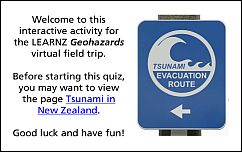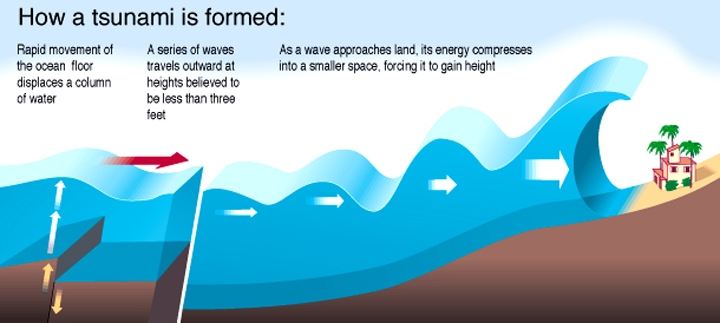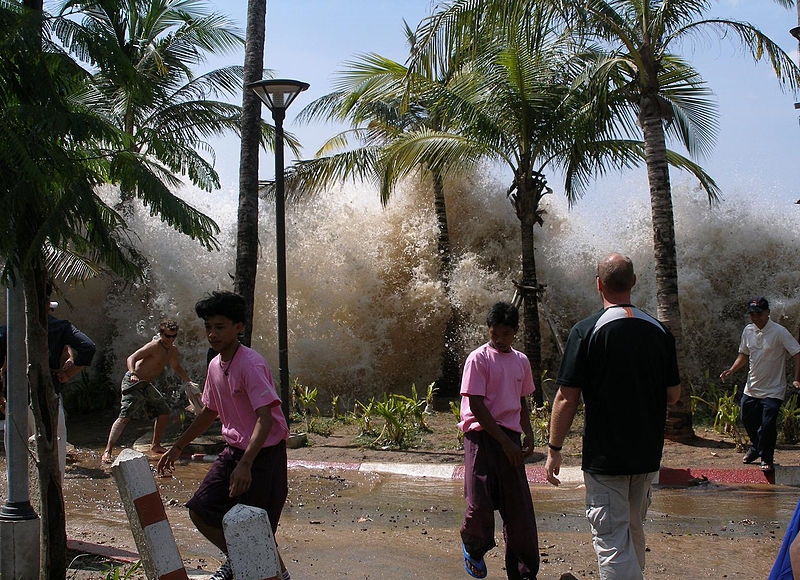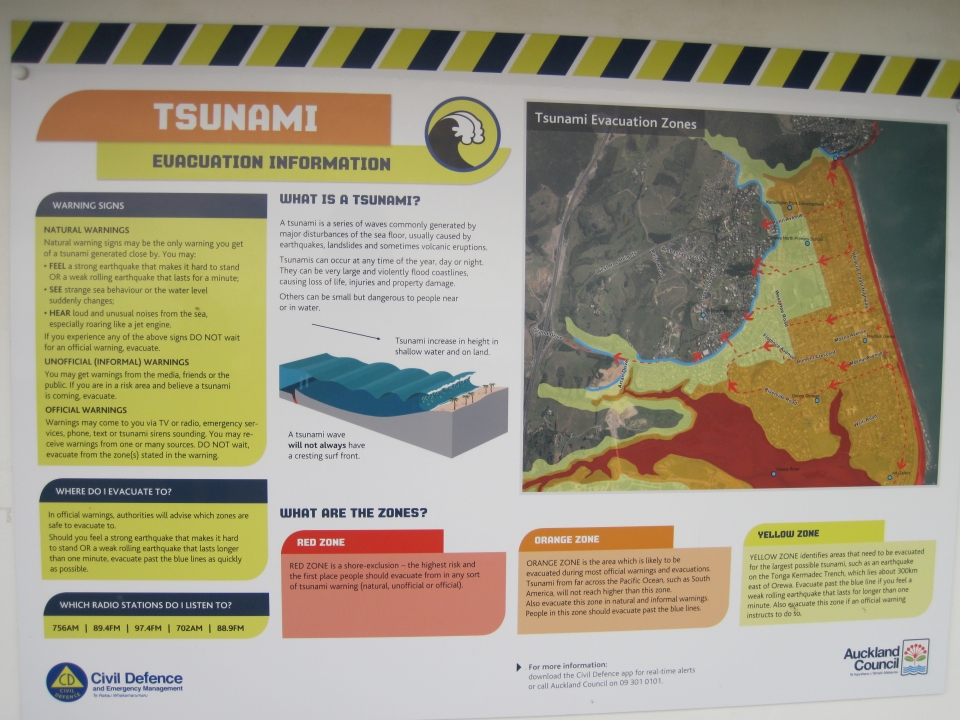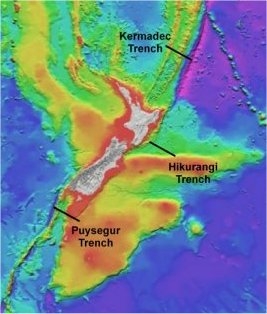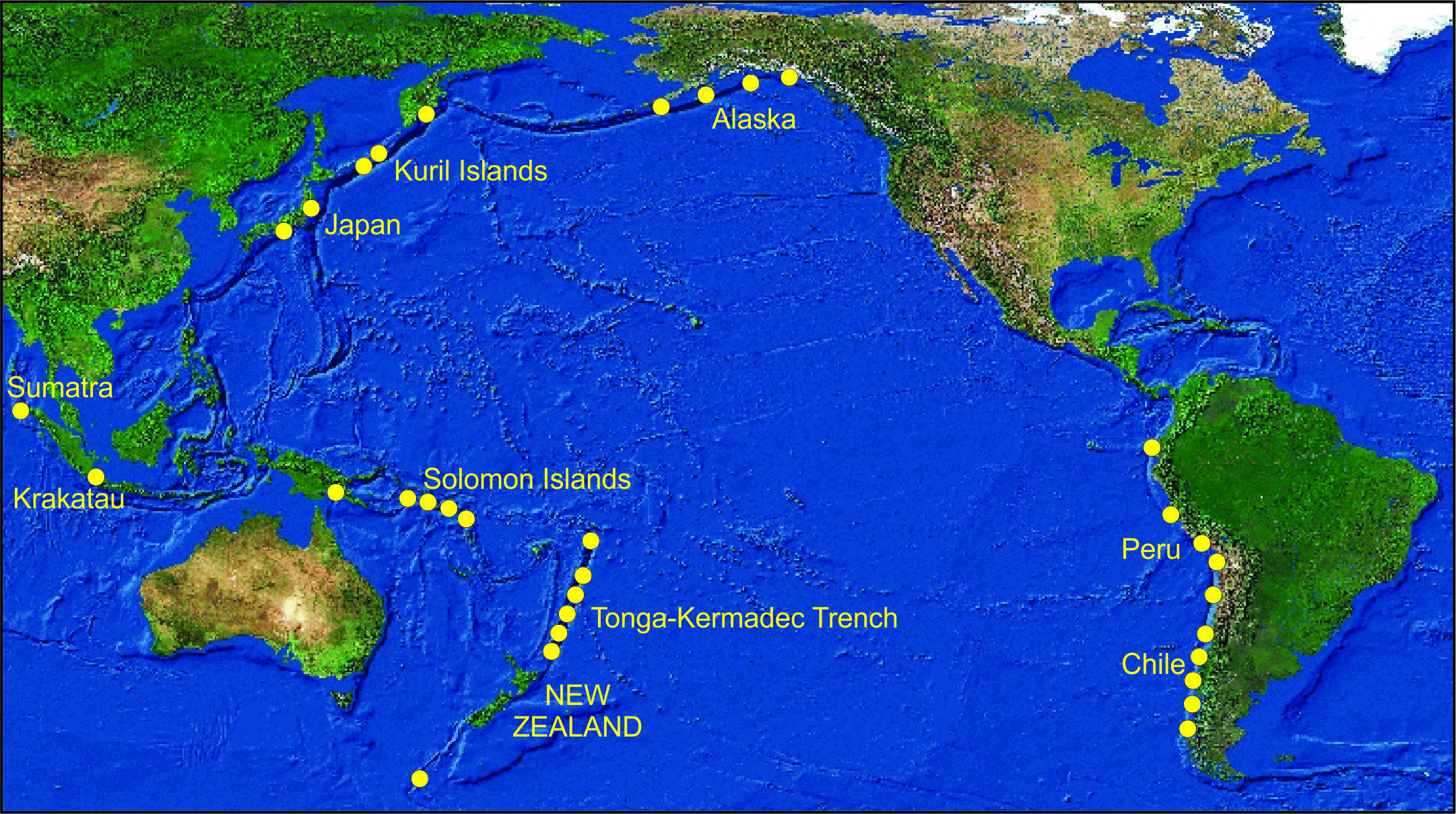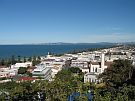What causes a tsunami?
The most common cause of tsunami is a shallow earthquake that displaces the sea floor. Other triggers include;
- undersea landslides
- undersea volcanic eruptions
- meteorite impact
Sudden changes to the seafloor raises the water level locally and causes the ocean to flow away from the movement, creating waves.
Tsunami waves
In the open ocean, tsunami waves travel at 600kph to 700kph. In the deep ocean, waves from a large tsunami may be as little as 60cm high. They pass ships unnoticed. As they encounter shallow water, they slow down to about 30kph and increase in height.
Before a tsunami
The seawater may recede a long way out, sometimes hundreds of metres, before coming back in as a tsunami. Tsunamis are not just moving lumps on top of the ocean surface, they also include hollows. Sometimes the hollow reaches the coast first. When this happens, the ocean first draws down and sucks water away from coastlines. It then rushes back in with enormous speed and force as the lumps arrive.
People who notice the receding water have as little as five minutes to flee inland to higher ground. Other signs of a tsunami are a sudden rise or fall in sea level and hearing loud and unusual noises from the sea.
Tsunami in New Zealand
In New Zealand there here have been about 10 tsunami higher than 5 metres since 1840. Some were caused by distant earthquakes, but most by seafloor earthquakes not far off the coast.
Some tsunamis are turbulent, foaming walls of water filled with debris and sand that crash ashore and sweep inland. Others are just rapidly rising or falling water levels over minutes to an hour. Both are dangerous. Both can travel over land at speeds faster than a person can run.
Risk of tsunami
The risk of tsunami in the Pacific Ocean is higher than for other oceans because of the Pacific Plate boundary or ‘Ring of Fire’. This zone has frequent earthquakes due to movement of the tectonic plates. New Zealand is therefore at risk of tsunami.
 Sources of tsunami
Sources of tsunami
Tsunami can come from local sources or far off sources. If a tsunami is generated close to shore then there may be very little warning. Tsunami generated by local earthquakes can arrive at the nearest coast before scientists can calculate the location of the earthquake and issue a warning and activate tsunami sirens. A strong earthquake may be the only warning of a tsunami.
Warnings
If an earthquake lasts for more than a minute or is strong enough that it is difficult to stand then you need to move to higher ground. If you are at the beach and notice the sea suddenly recedes you also need to move to higher ground.
For tsunamis caused by distant earthquakes such as in South America there will be warnings. Warnings from the Pacific Tsunami Warning Centre PTWC, will be issued by the Ministry of Civil Defence and Emergency Management if needed. Tsunamis from South America, Alaska and Japan take more than 12 hours to reach New Zealand.

